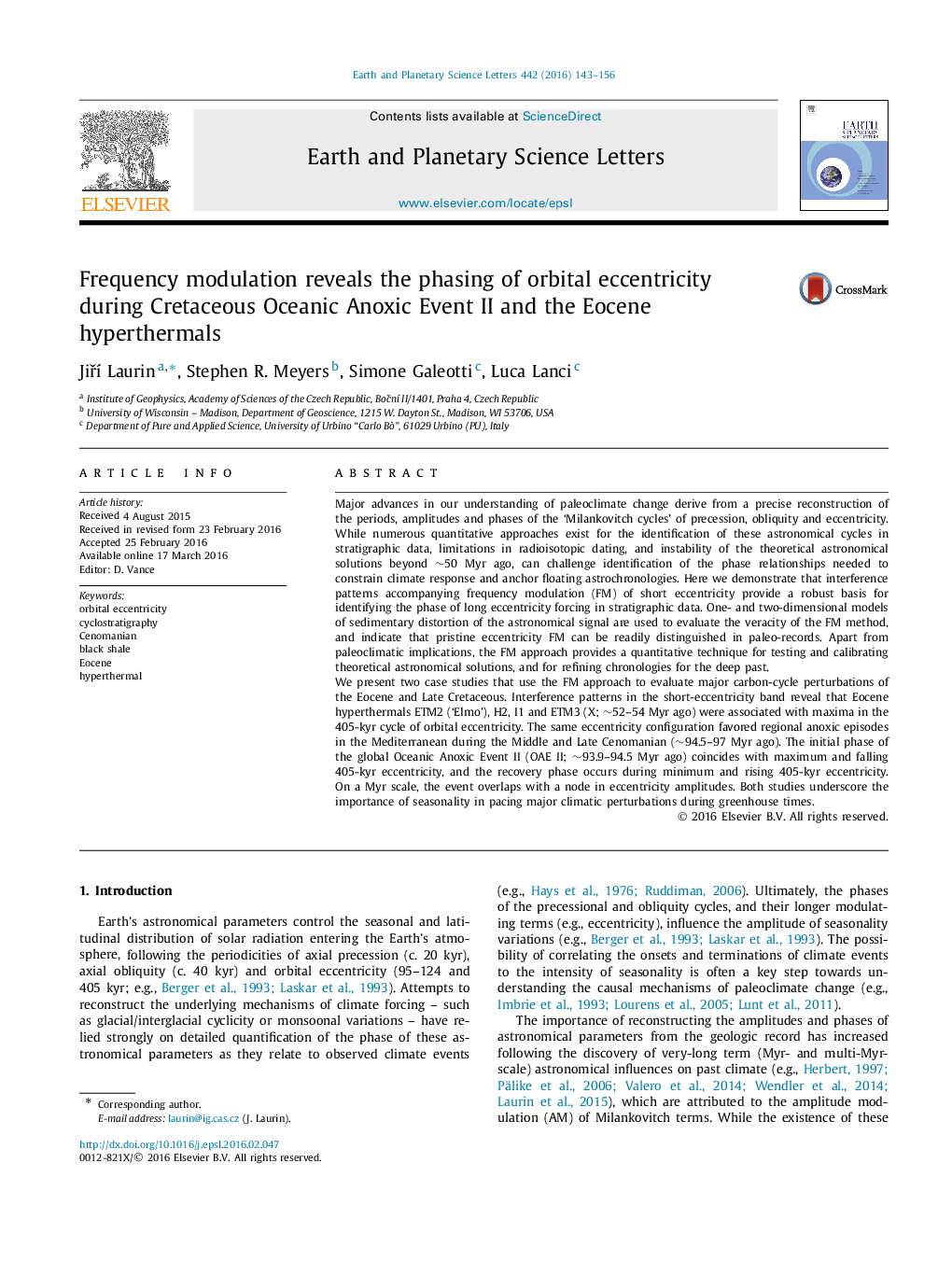| Article ID | Journal | Published Year | Pages | File Type |
|---|---|---|---|---|
| 6427556 | Earth and Planetary Science Letters | 2016 | 14 Pages |
â¢Stratigraphic record of eccentricity-related frequency modulation (FM) is examined.â¢Criteria for distinguishing pristine FM from depositional artifacts are proposed.â¢FM is employed to interpret the phase of 405-kyr eccentricity in paleo-records.â¢Eocene hyperthermals occur within ±90 degrees of 405-kyr eccentricity maxima.â¢Reduced amplitude of eccentricity and seasonality accompany OAE II.
Major advances in our understanding of paleoclimate change derive from a precise reconstruction of the periods, amplitudes and phases of the 'Milankovitch cycles' of precession, obliquity and eccentricity. While numerous quantitative approaches exist for the identification of these astronomical cycles in stratigraphic data, limitations in radioisotopic dating, and instability of the theoretical astronomical solutions beyond â¼50 Myr ago, can challenge identification of the phase relationships needed to constrain climate response and anchor floating astrochronologies. Here we demonstrate that interference patterns accompanying frequency modulation (FM) of short eccentricity provide a robust basis for identifying the phase of long eccentricity forcing in stratigraphic data. One- and two-dimensional models of sedimentary distortion of the astronomical signal are used to evaluate the veracity of the FM method, and indicate that pristine eccentricity FM can be readily distinguished in paleo-records. Apart from paleoclimatic implications, the FM approach provides a quantitative technique for testing and calibrating theoretical astronomical solutions, and for refining chronologies for the deep past.We present two case studies that use the FM approach to evaluate major carbon-cycle perturbations of the Eocene and Late Cretaceous. Interference patterns in the short-eccentricity band reveal that Eocene hyperthermals ETM2 ('Elmo'), H2, I1 and ETM3 (X; â¼52-54 Myr ago) were associated with maxima in the 405-kyr cycle of orbital eccentricity. The same eccentricity configuration favored regional anoxic episodes in the Mediterranean during the Middle and Late Cenomanian (â¼94.5-97 Myr ago). The initial phase of the global Oceanic Anoxic Event II (OAE II; â¼93.9-94.5 Myr ago) coincides with maximum and falling 405-kyr eccentricity, and the recovery phase occurs during minimum and rising 405-kyr eccentricity. On a Myr scale, the event overlaps with a node in eccentricity amplitudes. Both studies underscore the importance of seasonality in pacing major climatic perturbations during greenhouse times.
